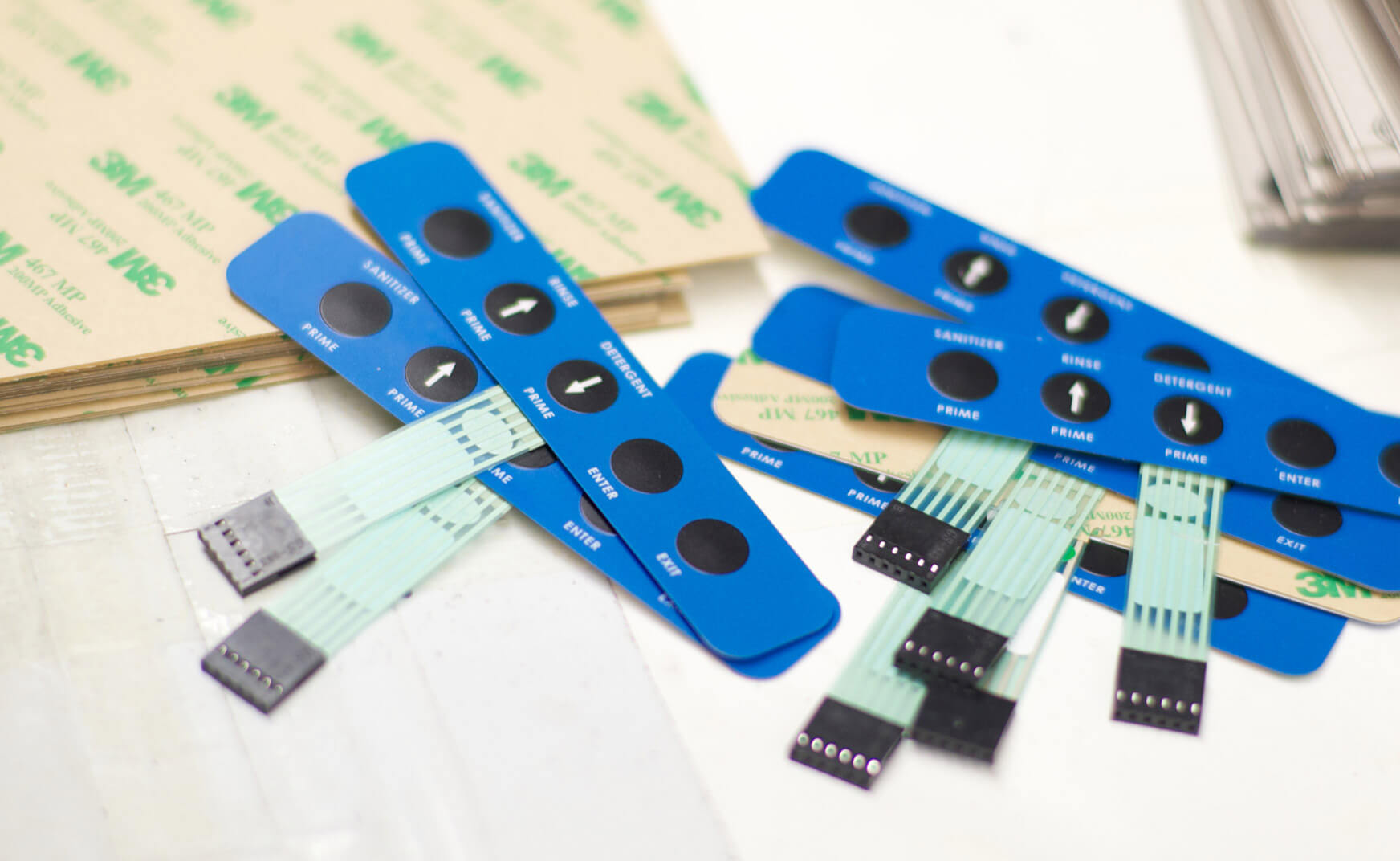Why Selecting the Right Membrane Switch Is Vital for Your Item Layout
Understanding the Functionality of Membrane Layer Changes for Interface Instruments
The performance of membrane layer switches over represents a substantial development in customer interface design, integrating performance with visual flexibility. As sectors increasingly prioritize customer experience, understanding the nuances of membrane layer switch modern technology becomes necessary.
What Are Membrane Layer Switches?
Membrane layer switches are cutting-edge user interface gadgets that facilitate user communication with electronic equipment. These versatile elements include several layers, consisting of a visuals overlay, spacer, and a published circuit layer. The design permits a seamless combination into various electronic devices, enhancing both the visual and functional aspects of user interfaces.
Membrane switches are commonly employed in a vast array of applications, from house devices to commercial equipment and medical gadgets. Their building usually includes a thin profile, making them a perfect choice for compact layouts. The responsive responses supplied by these buttons can be engineered to meet specific customer choices, guaranteeing effective communication in between the individual and the device.
Resilience is another substantial advantage of membrane layer switches, as they are resistant to dirt, wetness, and chemicals, which enhances their life-span sought after atmospheres. Additionally, these buttons can be personalized in terms of form, size, and visuals design, permitting branding and user-specific functions. Overall, membrane layer changes stand for a functional service for boosting user experience in digital devices, incorporating performance with visual charm in a reliable fashion.
Exactly How Membrane Layer Switches Over Work
Operating on a straightforward concept, membrane layer changes use a layered construction to sign up individual input effectively. Each button consists of numerous layers, including a published circuit layer, a spacer layer, and a leading graphic layer, which are made to collaborate flawlessly. When an individual presses the leading layer, it compresses the spacer layer, bringing the conductive aspects of the circuit layer right into call with each other.
This call produces a shut circuit, signifying the device to carry out a specific feature. The design enables numerous configurations, consisting of responsive feedback, which can enhance the individual experience by giving a physical sensation upon activation. The products used in membrane switches commonly include adaptable substratums, such as polyester or polycarbonate, which ensure toughness and strength against wear and tear.

Trick Benefits of Membrane Layer Buttons

Another substantial benefit is their compactness. Membrane buttons are thin and light-weight, which allows suppliers to save space in their tools without compromising capability. This function is particularly advantageous in applications where weight and volume are vital considerations.
In addition, membrane switches are immune to dust, dampness, and chemicals, improving their durability. This durability extends their life expectancy and lowers the requirement for regular substitutes, causing expense financial savings in time.
In addition, the responsive feedback offered by membrane layer buttons can be optimized to improve customer interaction. They can consist of features such as increased switches or audible clicks, boosting usability and individual experience.
Applications Throughout Industries
Interface gadgets using membrane buttons are common in a vast array of industries, showcasing their versatility and performance. Membrane Switch. In the clinical industry, membrane layer switches are indispensable to gadgets such as diagnostic tools and person tracking systems, where their longevity and ease of cleaning are vital for keeping hygiene right here standards. Likewise, in the vehicle sector, these switches are employed in dashboard controls and infomercial systems, giving a streamlined and modern-day user interface for customers.
Furthermore, the consumer electronic devices sector take advantage of membrane switches in devices and portable tools, you could check here where portable style and straightforward user interfaces boost customer experience. Industrial applications additionally take advantage of membrane layer changes for control panels in machinery and automation systems, emphasizing their effectiveness and resistance to harsh environments.
In the aerospace and protection markets, membrane buttons are used in cabin controls and devices, where integrity and performance under severe problems are critical. Additionally, the pc gaming sector increasingly incorporates membrane layer buttons in controllers and arcade devices, adding to an interesting individual experience. In general, the adaptability of membrane switches allows their widespread usage across numerous fields, highlighting their importance in modern interface style.
Future Fads in Membrane Layer Switch Modern Technology

In addition, the usage of advanced materials, such as polycarbonate and polyester movies, is anticipated to rise, offering improved resilience and resistance to ecological stress factors. These products add to the overall durability of membrane buttons, making them ideal for harsher commercial applications.
Furthermore, the consolidation of clever innovation, including IoT connectivity, will certainly allow membrane layer switches to interact with various other gadgets and systems, promoting an extra interactive customer experience. This trend aligns with the growing demand for wise gadgets throughout different markets, from health care to customer electronic devices.
Finally, personalization alternatives are anticipated to expand, permitting manufacturers to develop bespoke remedies customized to details individual requirements and preferences. These developments will position membrane layer buttons as vital elements in the evolution of interface innovation.
Final Thought
In conclusion, membrane layer important site switches represent a crucial improvement in individual interface modern technology, using a reputable and versatile solution for diverse digital applications. As developments in product scientific research and touch noticing modern technologies continue, the performance and applicability of membrane switches are anticipated to expand, strengthening their significance in modern-day digital devices.